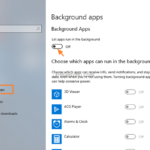With Windows 10, many users complain that their laptop battery drains quickly even with low usage or even in full shutdown. This “battery drain” issue in Windows 10 happens, for two basic reasons. The first reason is that Windows 10 loads too many background applications that consume battery power even if they are not being used.
The next reason, that causes the battery drain, even in full shutdown, is the “Fast Startup” feature. Windows 10 (and Windows 8/8.1) has enabled by default the “Fast Startup” feature, that allows the system to boot and start faster. In fact, when the “Fast Startup” is enabled, Windows 10 doesn’t perform a full system shutdown and resumes from a hibernation state.
In this tutorial you ‘ll find instructions, to prevent Windows 10 to drain the battery power.
How to FIX the Battery Drain issue in Windows 10.
Step 1. Prevent Apps from Running in the Background.
The first step, to resolve the battery drain problem in Windows 10, is to avoid apps to run in the background. To disable the background apps:
1. Navigate to Start -> Settings -> Privacy.
2. Select Background Apps at the left, and then at the right side, put the “Let apps run in the background” switch to Off, or individually choose the apps that you don’t want to run on the background and toggle them off.
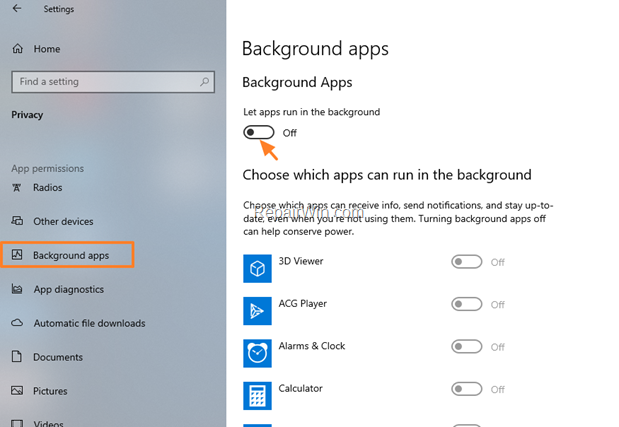
Step 2. Turn On the Battery Saver.
The next step, is to enable the battery saver in order to extend the battery life by limiting the background activity.
1. Navigate to Start -> Settings -> System.
2. At Battery options:
a. Click “See which apps are affecting your battery life”, to find out the battery usage from the open apps.
b. Check the “Turn battery saver on automatically if my battery fails below” checkbox, and move the slider to a suitable position.
c. Additionally, select “Lower screen brightness while in battery saver.
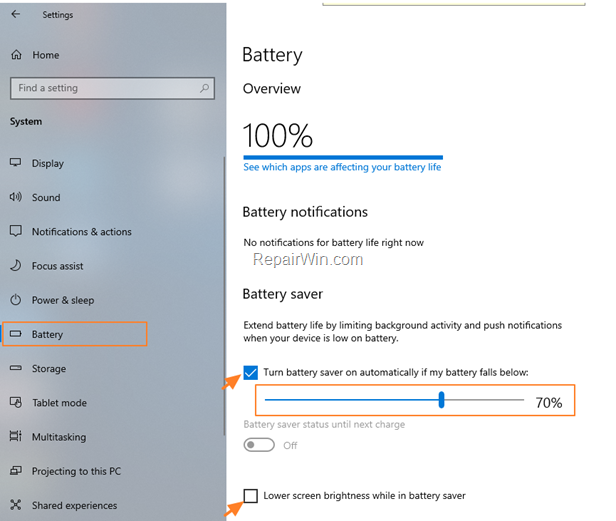
Step 3. Disable the Fast Startup.
The next step, is to force Windows 10 to fully shutdown, by disabling the fast start feature.
1. Navigate to Start -> Settings -> System.
2. At Power options click Additional power settings.
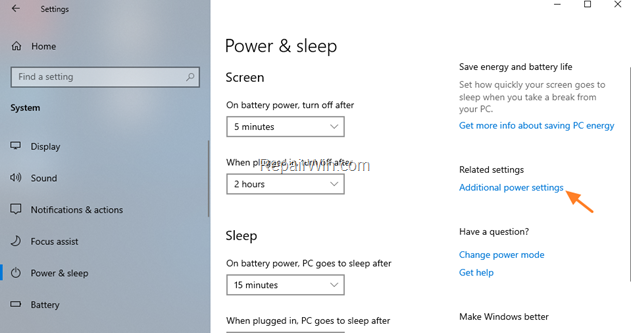
3. Select Choose what the power buttons does at the left.
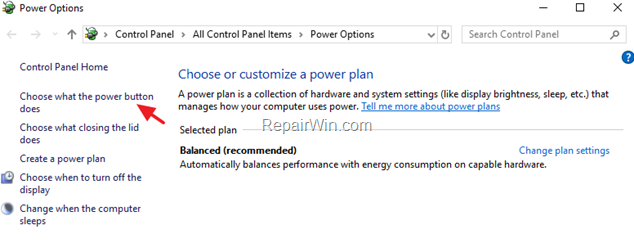
4. Then click Change settings that are currently unavailable.
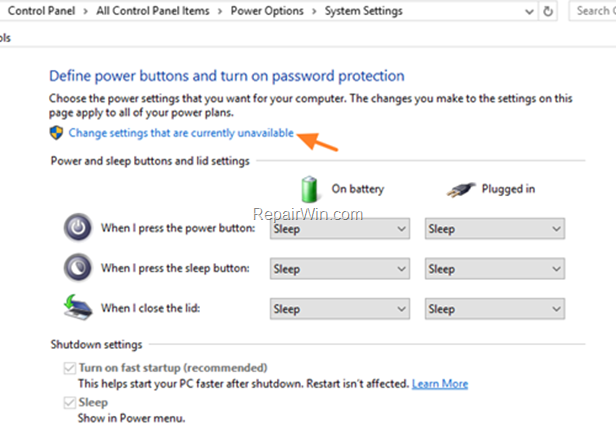
6. Uncheck the Turn on fast startup (recommended) option and click Save changes. *
* Note: If the fast start up option was already unchecked, then check it and restart your computer. After restart uncheck it and restart your computer again.
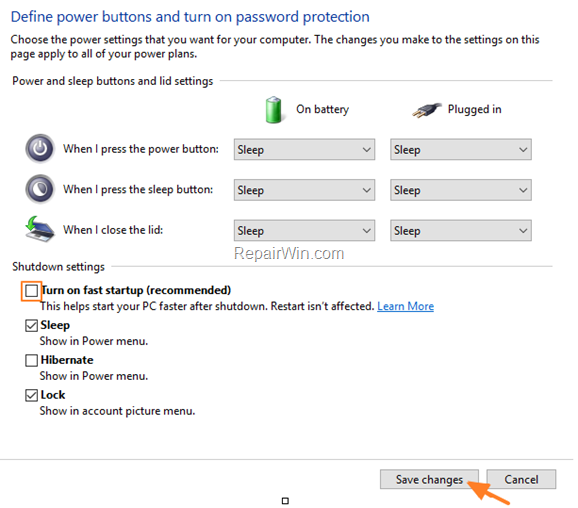
7. Restart your computer.
Step 4. Disable Hibernate.
The ‘Hibernate’ is a power feature, that uses less power than sleep and when you start up the PC again, you’re back to where you left off. In some cases, the hibernate feature cause your Windows 10 PC to not shutdown completely. To disable hibernate:
1. At the search box type: command prompt or cmd
2. Right click at Command Prompt and select Run as Administrator
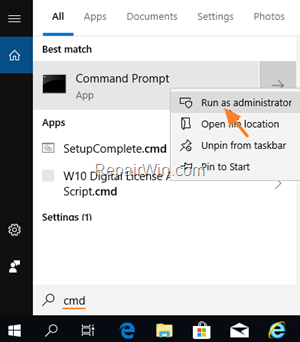
3. At command prompt give the following command and press Enter.
- powercfg -h off
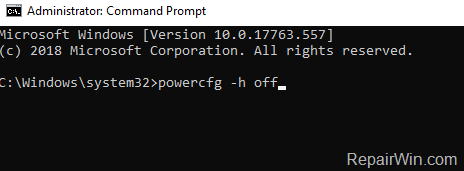
4. Restart your computer. *
* Note: If you want to re-enable the ‘Hibernate’ feature, just type this command in administrative command prompt:
- powercfg -h off
Step 5. Modify Power Settings on Network Adapter.
The next method to fix the battery drain issue in Windows 10 is to modify the power settings on the network adapters.
1. Open Device Manager.
2. Expand Network Adapters.
3. Right click at the installed network adapter and select Properties.
3. Select the Power Management tab.
4. Uncheck the ‘Allow this device to wake the computer‘ checkbox and click OK.
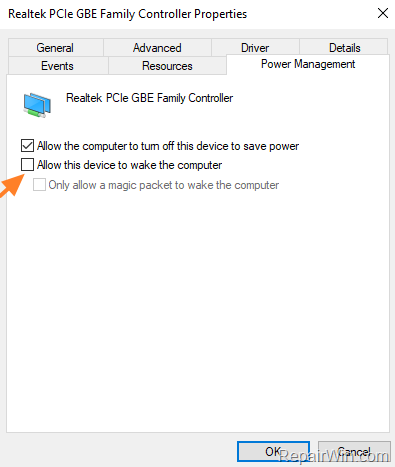
Step 6. Roll Back the Intel Management Engine Interface Driver.
If the battery drain issue appears after installing a Windows 10 update, then proceed and rollback the driver for the Intel Management Engine Interface. To do that:
1. Press Windows ![]() + R keys to open the run command box.
+ R keys to open the run command box.
2. Type: devmgmt.msc & click OK.
3. Expand System devices.
4. Right click on Intel Management Engine Interface and select Properties.
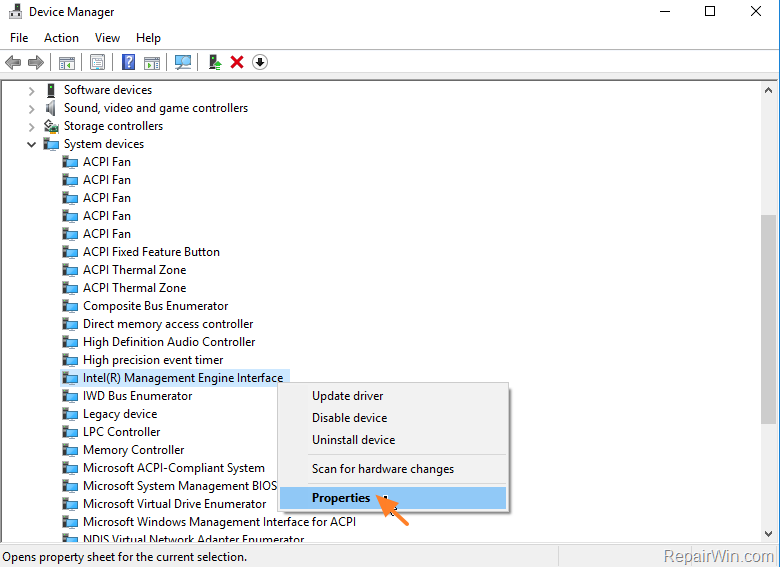
5. Select the Driver tab and click Roll Back Driver. *
* If the Roll Back Driver button is greyed out, then navigate to your laptop’s or motherboard’s manufacturer support site to download and install an older driver version for the Intel Management Engine Interface.
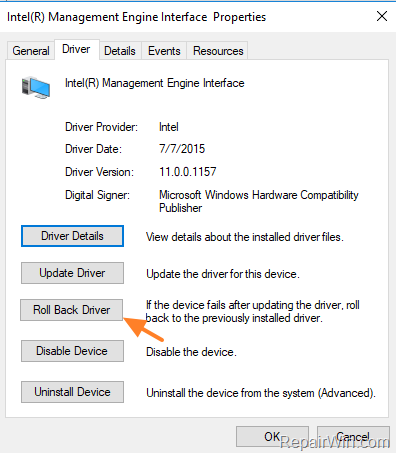
6. Restart your computer.
Step 7. Other Suggestions to Resolve the Battery Drain issue.
1. Replace the laptop’s charger and always use a branded charger, to extend your battery’s life.
2. If your laptop’s battery is old, probably its capacity has dropped and should be replaced. To diagnose your battery’s health, use the BatteryInfoView utility.
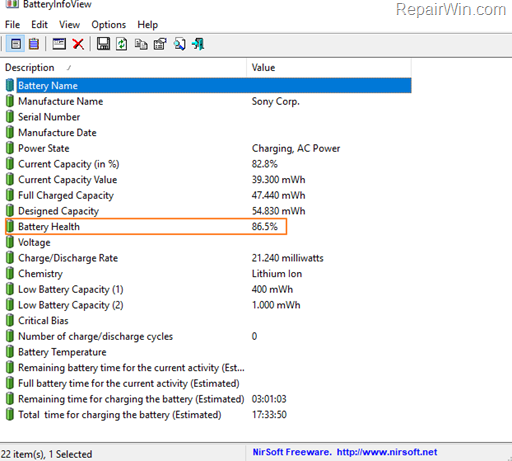
That’s all folks! Did it work for you?
Please leave a comment in the comment section below or even better: like and share this blog post in the social networks to help spread the word about this problem.

